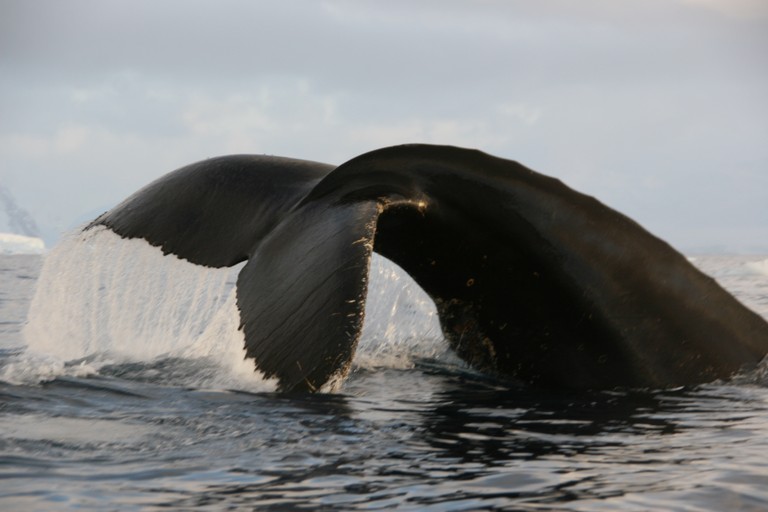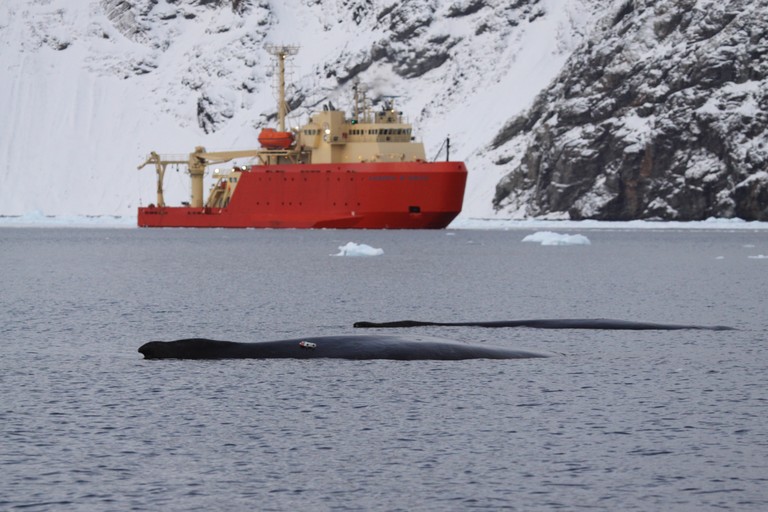Humpback Whales Reluctant to Migrate from Antarctica

Humpback whales spend their summers in Antarctica chowing down on shrimplike krill. Now, scientists are finding that these marine behemoths are reluctant to leave the Antarctic as winter draws near.
A new study, published online July 30 in the journal Endangered Species Research, is one of the few to count whales in the Antarctic autumn rather than summer and to focus on near-shore waters rather than open ocean. The results reveal that Antarctica's bays are a more important food source than scientists had expected. The study also suggests that later winters and less ice due to climate change could affect the whales' migration habits.
"Establishing the autumn density of humpback whales in the inshore regions of the Western Antarctic Peninsula is crucial for understanding the role they play in this rapidly changing ecosystem," study researcher Ari Friedlaender, a scientist at the Duke University Marine Lab, said in a statement.
Friedlaender, study leader David Johnston of Duke University and their colleagues surveyed the bays and straits of the Western Antarctic Peninsula between April and June 2009 — when summer is already drawing to a close at these high latitudes. They used visual surveys backed up by tagging studies to estimate the density of whales near the Antarctic shore. [In Photos: Tracking Humpback Whales]

Humpbacks (Megaptera novaeangliae) typically feed at high latitudes in the summer and then move toward the equator to breed in the winter. They were once hunted nearly to extinction, but have recovered in numbers since bans on commercial whaling have been enacted. The International Union for Conservation of Nature lists humpback whales as "least concern," though they are still protected under the U.S. Endangered Species Act.
It's not easy to get good counts of whales in the tight confines of bays and inlets, Johnston said in a statement.
"We had no idea that the whales were going to be packed up in these narrow channels and passages," he said. "We had to think on our feet a bit and use alternative sampling approaches and incorporate data from other portions of the project."
Sign up for the Live Science daily newsletter now
Get the world’s most fascinating discoveries delivered straight to your inbox.
The result was a count of 371 groups of humpback whales over a 406-mile (654 kilometers) area of ocean. At their most crowded, the whales were seen at a density of 1.75 per square kilometer. (One square kilometer equals about 0.4 square miles.)
"That's higher than anyone expected," Johnston said.
That high density was seen in the relatively close quarters of Wilhelmina Bay, Antarctica. The lowest densities were seen in more open areas, the researchers reported.
The findings reveal that humpbacks spend more time than expected in Antarctica before beginning their long migrations north to the waters off of Central and South America, Australia, New Zealand and southern Africa to breed. Climate change could alter these patterns, the researchers wrote.
"The number of humpback whales we detected in these bays in the late autumn raises questions about the timing and frequency of migratory movements to breeding regions by individual whales," they wrote. "If the Gerlache Strait region remains largely ice-free in future winters, nonreproductive humpback whales could choose to remain close to large overwintering krill swarms and forego migration."
Follow Stephanie Pappas on Twitter @sipappas or LiveScience @livescience. We're also on Facebook & Google+.

Stephanie Pappas is a contributing writer for Live Science, covering topics ranging from geoscience to archaeology to the human brain and behavior. She was previously a senior writer for Live Science but is now a freelancer based in Denver, Colorado, and regularly contributes to Scientific American and The Monitor, the monthly magazine of the American Psychological Association. Stephanie received a bachelor's degree in psychology from the University of South Carolina and a graduate certificate in science communication from the University of California, Santa Cruz.









